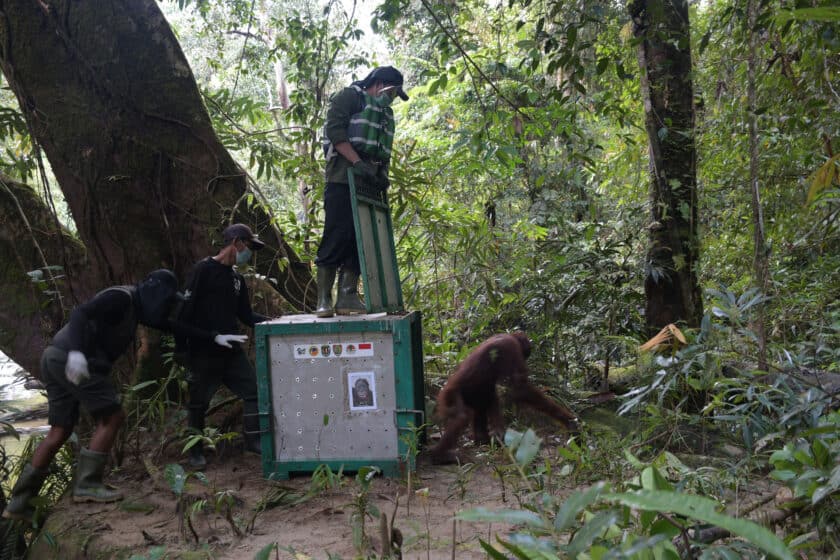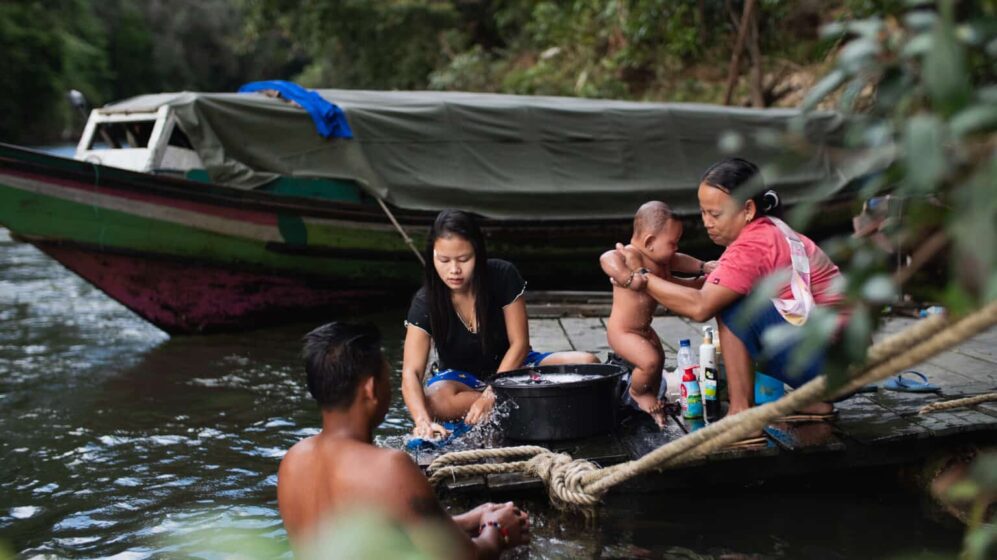Where do Ben, Miko and Nody live now? Well, they reside in the Bukit Baka Bukit Raya National Park (TNBBBR). Learn more about this safe haven for rehabilitated orangutans.
When orphaned orangutans have completed a long rehabilitation process, they are ready for the finale; to be released in the wild where they can start a new life as free roaming orangutans.
But where does this actually take place?
Well, there are three national parks, located in different places in Kalimantan, the Indonesian part of Borneo. Here we take you to one of them: Bukit Baka Bukit Raya National Park (TNBBBR in short). This is where the orangutans from Nyaru Menteng are currently being released. The forest area is thus home to, among others, Kejora, Ben and Miko.

A fantastic home for orangutans
TNBBBR actually consists of two national parks: Bukit Raya, established in 1978, and Bukit Baka, established in 1982. In 1992, the two were merged into one large national park.
The huge park is located in the beautiful Schwaner Mountains, and most of the park is therefore high terrain. But there are also plenty of lowland forests on the border between West and Central Kalimantan for the released orangutans.
Make a difference for the orangutansThis habitat is home to an abundance of wildlife; tree leopards, Malaysian bears and many different bird species. There is also a small native orangutan population in the park. But it is uncertain whether it will be viable in the future – therefore it needs to be strengthened with released orangutans.
So far, 199 orangutans have been relocated to this park from Nyaru Menteng Rehabilitation Center, with support from Save the Orangutan.
Monitoring teams keep an eye
However, the work does not end with the releases. Monitoring teams, living in camps deep in the park, continuously track the orangutans’ movements. When they encounter the orangutans, they take notes of behavior, signs of illness – and offspring!
This important data is the basis for improving the rehabilitation program. At the same time, it also provides a safety net for the recently released orangutans. If they don’t feel well, they can get help in the camps or, in the worst case, come back to rehabilitation.
In TNBBBR, the monitoring teams are based in two camps: Hiran and Bemban. They are located in different parts of the park and are separated by rivers.

The importance of the local community
Most of the team members come from villages close to the rainforest, and they play a major role in spreading knowledge about the orangutans to their neighbors. Peaceful coexistence between animals and humans is an important focus area for Save the Orangutan and our partner BOS Foundation. Education is, among other things, a tool to avoid conflicts between orangutans and villagers.
We also work closely with the indigenous people in the villages to provide them with rights to manage the forest areas they live in. This way, the forest is managed in the best possible way, and that is good for both people and animals.